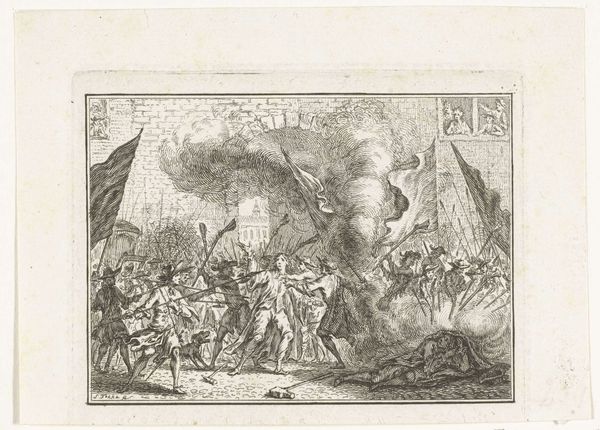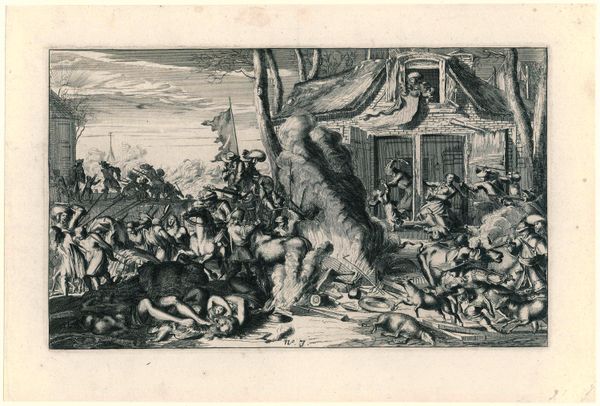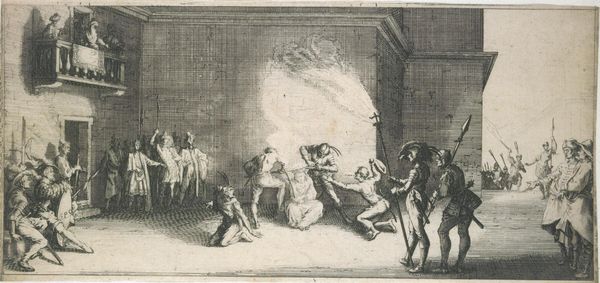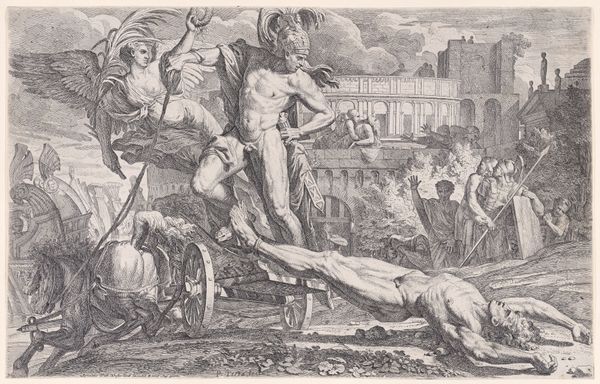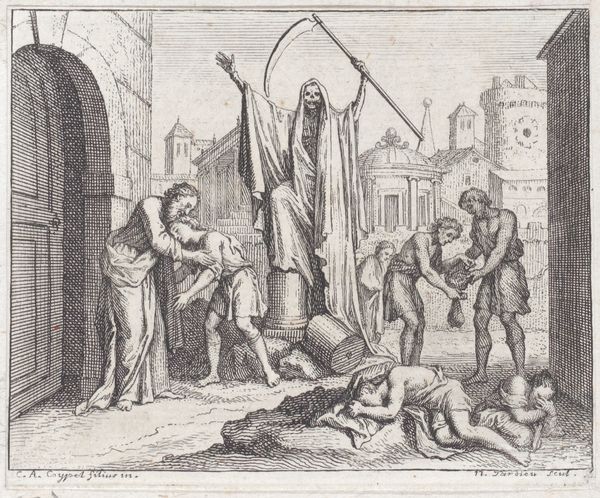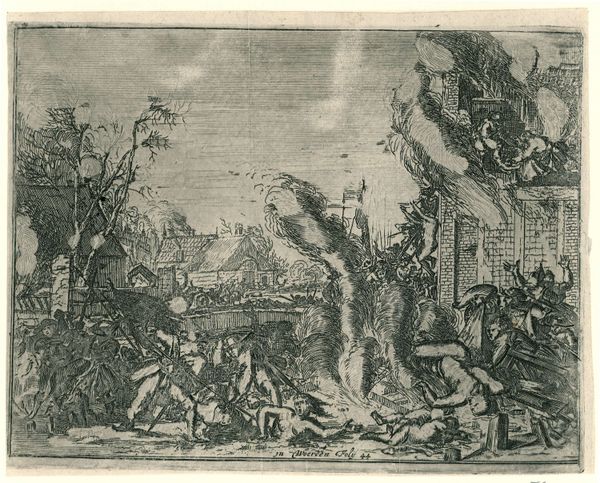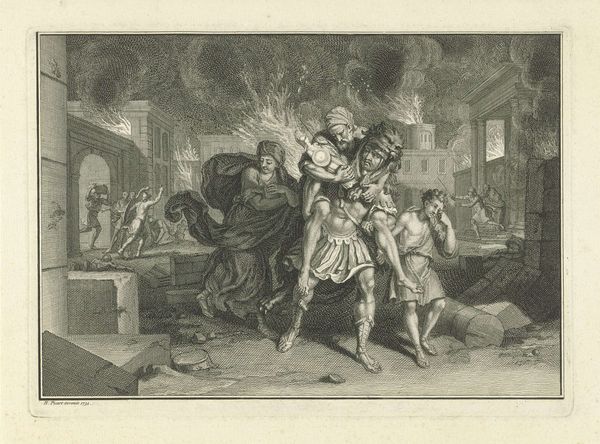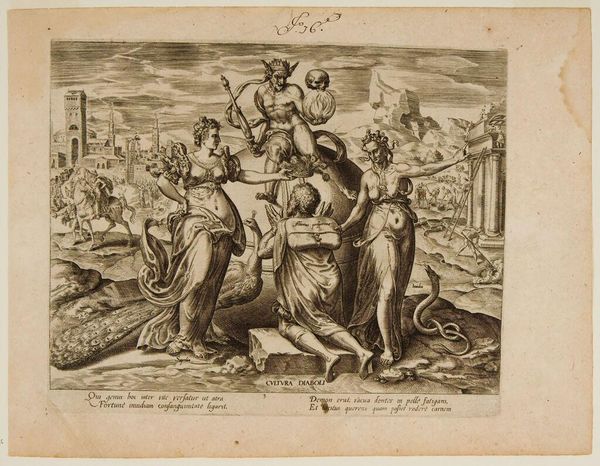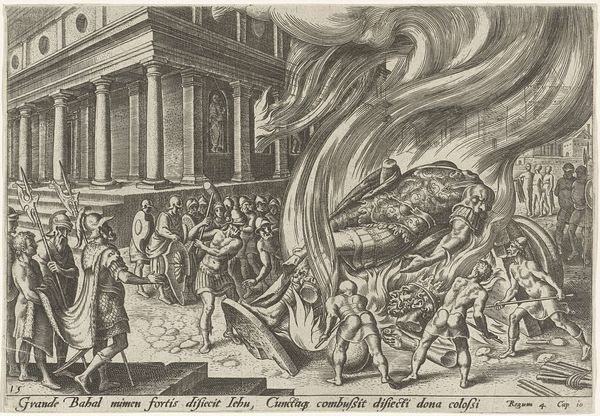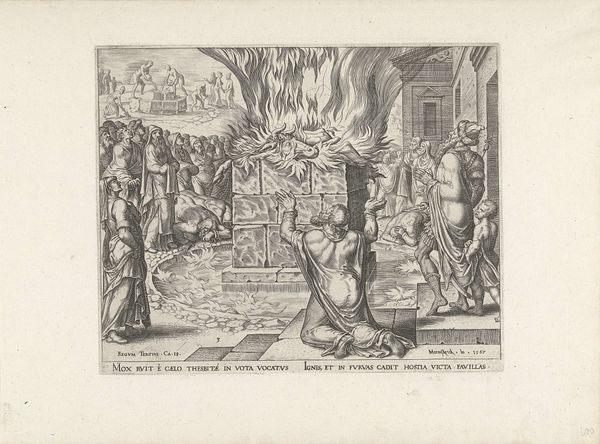
etching, intaglio
#
medieval
#
narrative-art
#
baroque
#
etching
#
intaglio
#
etching
#
history-painting
Copyright: Public domain
Editor: So this etching by Jan Luyken, made in 1683, is titled "Burning of Arnoldus, Teacher from Brixen, Rome, AD 1145." It depicts quite a gruesome scene, with a fire taking center stage. What stands out to you in this work? Curator: Look closely at the textures and the line work that Luyken achieves through etching. This intaglio printmaking process itself involves labor – the artist meticulously cuts lines into a metal plate, applies ink, and then uses immense pressure to transfer that image onto paper. It speaks to a system of production, disseminating a specific narrative about power and heresy. Editor: That’s a great point, looking beyond the narrative itself. How does that production relate to what we see depicted here? Curator: Consider the historical context. The Reformation relied heavily on printed materials to spread its ideas. Here, we see the inverse: the powerful institutions using visual propaganda to solidify their authority by portraying the brutal suppression of dissenting voices. The choice of etching, allowing for multiple reproductions, suggests a calculated attempt to control information. The fire, the books, even the chains – everything is materially connected to power. Where do you think Luyken is positioning himself in this representation of labor? Editor: Perhaps Luyken's choice to depict this burning reveals the artist's own sympathies, a subtle resistance expressed through the very act of creating and circulating this image. Are the buildings meant to be architectural context, or symbols in and of themselves? Curator: Excellent observation! Consider that the architecture becomes just more materials and products of labour, to solidify both worldly and unearthly power. So then, what is the meaning behind showing these particular settings? Editor: It suggests that, like the etching process itself, systems and knowledge production take place and function in real-world locations. I now see how Luyken cleverly used this method to invite viewers to consider these power dynamics. Curator: Exactly! This image really illuminates how art production intersects with cultural power structures.
Comments
No comments
Be the first to comment and join the conversation on the ultimate creative platform.


